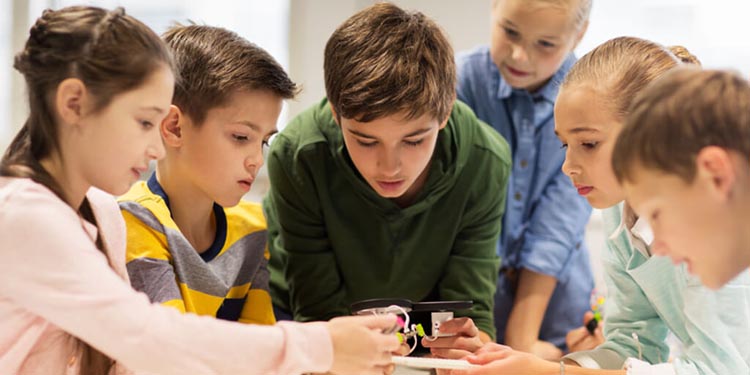
Some states and schools are leading the way but there’s plenty more to be done and we are on deadline
From The Hechinger Report
By Jaimie P. Cloud
October 25, 2021
We get what we educate for. That’s why it’s time to educate for the future we want: healthy, just and sustainable for ourselves and for generations to come.
There are lots of ways to begin.
In early grades, connecting children to the places where they live helps them learn to take care of those places — so the places can take care of them over time. Teachers and students can learn by doing place-based projects together, all the while meeting and exceeding required academic standards in authentic and meaningful ways. Distinguishing weather from climate is a good foundational step. Children can also collect and publish oral histories about a place. They can test water and soil, plant trees, compost and build soil fertility. They can “green up” their schoolyards; they can garden and grow food.
As students get older, we can engage their imaginations by asking them to envision the kind of future they want. By middle and high school, students are required to be able to distinguish facts from opinions, make reasonable arguments and back them up with evidence from multiple reliable sources. Those skills give our young people a good critical base from which to thrive over time as they navigate the world around them and address the unique challenges that define our era.
Those challenges include developing sustainable food systems, revitalizing the health of our oceans, reversing global warming, adapting to climate change, improving our health and well-being, protecting biodiversity, regenerating ecosystems and accelerating the shift toward a green economy and clean, renewable energy.
Teachers can emphasize the steps we have already taken, such as the greater availability of electric and hybrid vehicles, the shift toward regenerative farming and eating less meat, the increase in the number of community composting and food waste reduction programs and the growing availability of green energy and energy-efficient appliances and light bulbs.
Overcoming our present challenges will require fundamentally new ways of thinking and acting. It will also require academic proficiency. That’s why the emerging field of Education for Sustainability (EfS) has a central role to play in any successful transition from an unsustainable way of life to a regenerative one. To understand what Sustainability is all about, consider the words of author and researcher John R. Ehrenfeld: “The possibility that human and other life will flourish on the planet forever.”
As an educator, I like to think of Sustainability as building the capability to thrive over time in the context of a changing, interdependent and uncertain world. We must learn how to live well in our places without undermining those places’ ability to sustain us over time.
For better or worse, the foundations of our knowledge, skills and habits of mind are cultivated in our schools. Many sectors, including food and farming, architecture and design, business, government and urban and rural planning are making a shift toward sustainability. It’s time for our schools to play their part by helping young people learn how we can leave the world better than we found it.
Take the urgent need to address climate change. The extraction and burning of fossil fuels is emitting carbon dioxide and other greenhouse gasses in quantities and speeds faster than the Earth can absorb them. The gasses trap heat in our atmosphere, causing global warming, which, in turn, changes our climate in unpredictable and severe ways, creating a loud, destructive indicator of unsustainability — one that is flooding our homes and our shops, burning our towns, disrupting our lives and scaring our children.
That’s why we need the kind of leadership slowly emerging from our communities and our school systems — to join our children and young activists around the world.
We need to get creative, do the math and develop social contracts, norms and laws. We need to count on one another to individually and collectively do what it takes to reverse global warming and make the shift toward a healthy and sustainable future for ourselves and future generations.
School is the perfect place to teach and to learn how to do that. Our schools have scientists, mathematicians, historians. They have social scientists, writers, artists, linguists, psychologists, athletes and health professionals, all accessible in the building or on Zoom, every day. They can all help.
The field of Education for Sustainability also provides benchmarks, principles, frameworks and learning standards. There are plenty of professional learning communities, consultants, facilitators and youth leaders ready to assist via social media and their websites, along with resources for specific teaching on climate action, important books, solutions — and lessons for school leaders.
And there are some heartening examples of leadership at state levels making bold efforts to address the looming climate change crisis. New Jersey is the first state in the nation to integrate climate education standards across the curriculum. California approved spending $6 million to create free, open education resources for teaching climate change and environmental justice. There are plenty of other local and countywide examples in the works.
It’s important for all of us to remember that everything we do and don’t do makes a difference, and what we do today will influence our tomorrow. Empowering our students to think about the world, their relationship to it and their ability to influence it in an entirely new way will positively affect them and their communities for generations to come.
Photo: Insight Assessment
Read this and other stories at The Hechinger Report

